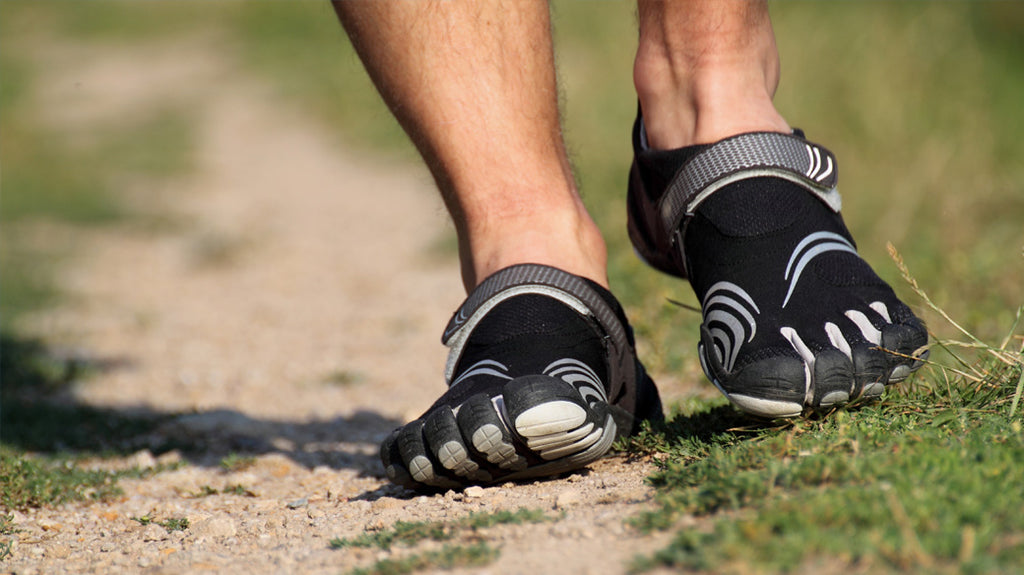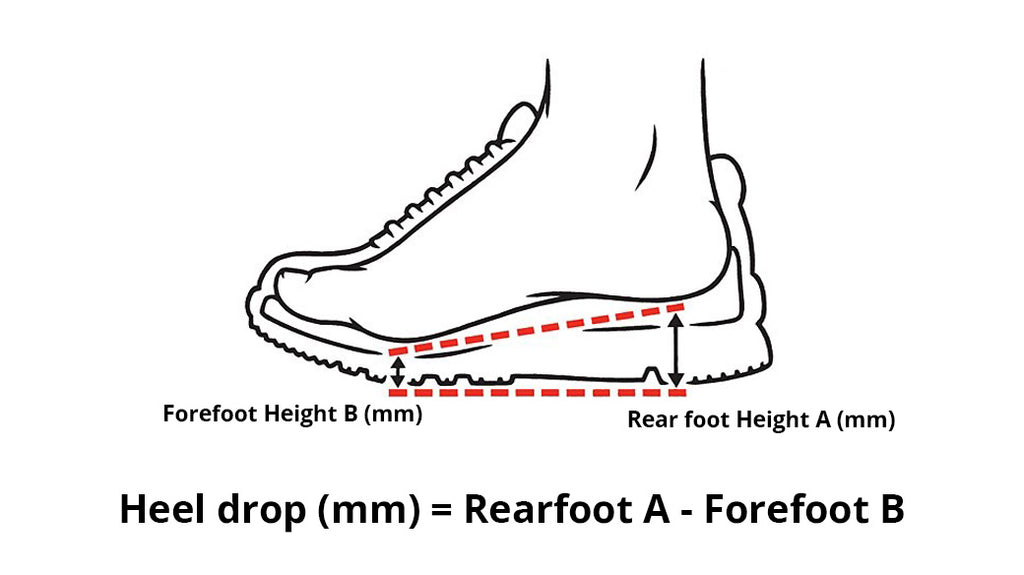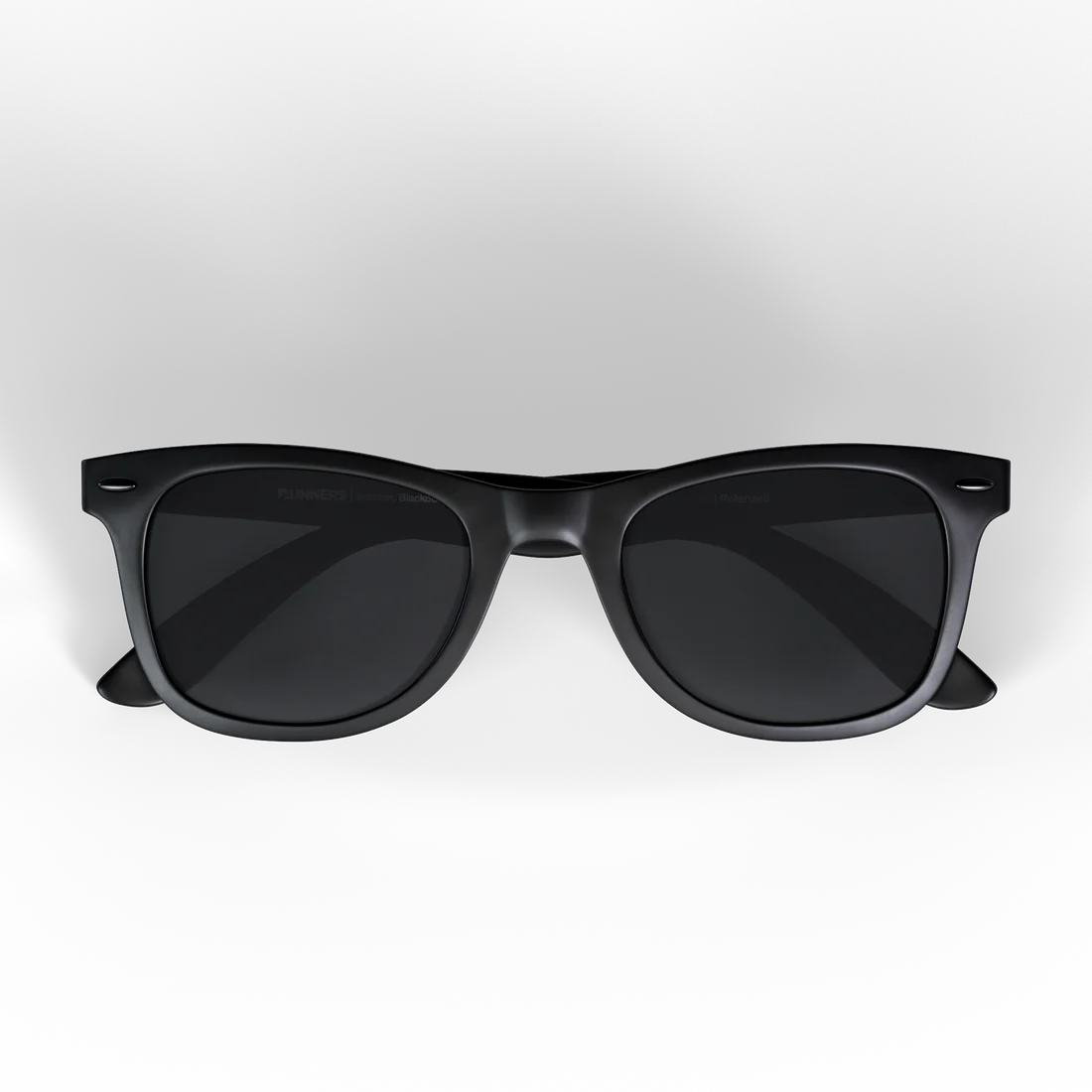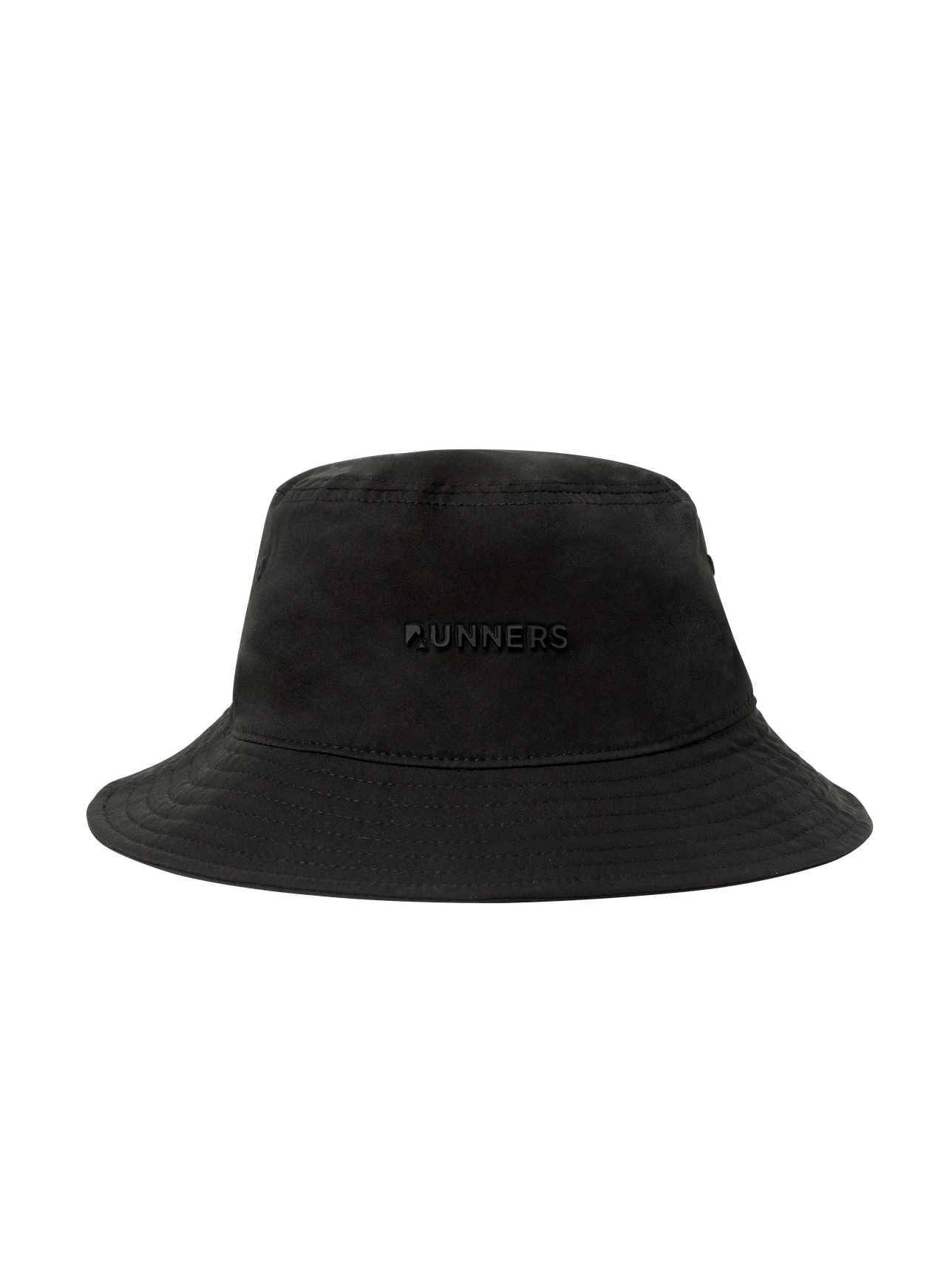What Are Minimalist Shoes?

Minimalist shoes have surged in popularity over the last decade among athletes from various sports.
Even those seeking everyday footwear are showing a growing interest in what minimalist models have to offer.
So, what are minimalist shoes, and why are so many people choosing them? Discover the benefits and appeal of minimalist footwear and why it’s becoming a favorite for both athletes and casual wearers alike.
What Are Minimalist Running Shoes?
“Minimalist shoes” might seem like a term that’s fairly self-explanatory, but there’s actually a lot of debate around what shoes actually fall under this category.
So, let’s start with what the experts have to say.
The following definition of minimalist shoes comes from “A consensus definition and rating scale for minimalist shoes”, which itself is taken from a study that was published in the Journal of Foot and Ankle Research. This was actually a very important study on minimalist footwear, so we’re going to return to it later on.
For now, here’s the definition of minimalist shoes that 40 of the study’s 42 experts agreed on (yes, even the experts can’t completely agree):
"Footwear providing minimal interference with the natural movement of the foot due to its high flexibility, low heel to toe drop, weight and stack height, and the absence of motion control and stability devices."
The study goes on to identify five metrics to use for identifying whether a shoe was actually minimalist or not.
The “Minimalist Index”: 5 Factors That Define a Minimalist Shoe
These five factors have since become known as the "minimalist index."
Each of these categories is scored out of 5 points. Once you get the final score – out of 25 – you multiply it by 4 to get your final minimalist score out of 100.
However, there’s no cutoff point, because, as you’re about to see, two shoes could have the same score while actually being very different if their cumulative scores are affected most from completely different categories.
So, with all that being said, if you’re wondering whether or not a shoe would be considered “minimalist” or not – at least by the “experts” – here are the metrics they use:
1. How Much the Shoe Weighs
This one’s pretty simple: how much does the shoe weigh?
If a shoe weighs less than 124 grams, it earns 5 points. On the other end of the spectrum, shoes over 325 grams get no points.
2. How Thick the Sole Is
Even light shoes can have thick soles that detract from their minimalist feel.
Shoes get 5 points if the center of their sole is less than 8 millimeters. Above 32 millimeters and the shoe gets 0 points.
3. How Flexible the Shoe Is
Lacking all that extra bulk should also lead to more flexibility, which the Minimalist Index breaks up into two different tests.
The first measures how much a shoe can fold if you try pressing the toe to the heel. This is worth up to 2.5 points.
The other test judges the shoe’s “torsional flexibility”, which is how much the shoe can twist if you turn the toe one way while turning the heel the other. Again, this category is judged out of 2.5 points.

4. The Angle of Its Heel-to-Toe Drop
The angle of the space between the heel and toe of a shoe is referred to as theheel-toe drop.
It doesn’t measure the actual amount of cushioning at either end that contributes to the difference, just the angle. So, two shoes with completely different amounts of cushioning could have the same heel-toe drop despite how different they would feel (which is why we have the rest of this index).
The higher a shoe’s heel-toe drop, the higher the angle is between the heel and toe. A shoe with no heel-toe drop is called a “zero-drop shoe”, which we’ll talk about more in just a moment.

5. Lack of Bells and Whistles
Technically, this category is referred to as “Motion Control and Stability Technologies”, but what it really references is how many bells and whistles the manufacturer added to a shoe. Usually, these technologies include things like heightened arches or heel counters – things that are meant to support your foot while it’s in motion.
Unfortunately, these well-intentioned features detract from a shoe’s minimalism. They lose a point for every one of these superfluous traits.
Minimalist Running Shoes vs. Barefoot Shoes? Is There a Difference?
In short, no – not really.
As we covered above, the term “minimalist shoe” is a fairly general one that covers a wide assortment of footwear.
The most common example isbarefoot shoes.
As you probably guessed, these shoes get their name because they’re designed to make wearers feel as though they’re running “barefoot” with no shoes on at all.
Obviously, the difference between these shoes and actually running barefoot is that the shoes provide a little extra cushioning and protection against hard surfaces (e.g., concrete, cement, running trails, etc.).
Otherwise, barefoot shoes are meant to be ABOUT as minimalist as shoes get for people who really take a less-is-more approach to their footwear.
However, there’s one option that is even MORE minimal than barefoot shoes…
Are Minimalist Shoes the Same as Zero-Drop Shoes?
Another term you’re bound to hear when you start researching minimalist shoes is “zero drop shoes”
As we talked about earlier, these are shoes where their heel-toe drop is basically completely flat.
Again, there’s “zero drop” between their heal and their toe.
In essence, they’re the most extreme version of a minimalist shoe – as minimalist as they can possibly get. So, while many minimalist shoes that are meant to give a “barefoot” feel still have some angle to their heel-to-toe drop, zero-drop shoes only refer to those where there’s absolutely none at all. If you really want to feel like you’re walking around barefoot – with some material for protection – you’ll want zero-drop minimalist shoes.
4 (Potential) Benefits of Wearing Minimalist Shoes
If you’re already sold on them, here’s our list of the best minimalist running shoes on the market as of 2024.
On the other hand, if you still need some convincing, here are the most common benefits people associate with these shoes.
And notice I said “potential” benefits. Stick around after this section because I’m going to cover some potential drawbacks to switching to this type of footwear.
Okay, let’s talk about why so many people love minimalist shoes.
1. A More Natural Feel
As we’ve already touched on, what distinguishes minimalist shoes from other models is that they are as streamlined as it gets – without actually being barefoot.
This is also one of the biggest benefits of minimalist shoes, too.
Proponents of these shoes believe thatthe natural movement it promotes is better for your feet and, by extension, the rest of your body.
Their argument is that people evolved to walk and run a specific way, but that modern shoes interrupt this natural movement – with disastrous results.
They wear minimalist shoes because, they believe, they allow your entire body to return to the way it’s supposed to move around, which means better overall health.
2. More Space for Your Toes
While most people have come to believe that even conventional shoes shouldn’t have too much padding in the heels, it may be that an equally big problem is actually on the other end.
That’s because thetoe box of your shoe may be unnecessarily constricting them. Once again, this might be an example of modern shoes forcing your foot into unnatural positions. And these unnatural positions go on to affect your muscles, ligaments, bones, and even your nerves.
Minimalist shoes, on the other hand (foot?), tend to offer much more space in their toe boxes. This space accommodates natural toe movement, which, in turn, promotes greater strength and agility.
3. A More Natural Gait
This next major benefit should come as no surprise: all of this foot-freedom probably leads to much more natural movement, especially when it comes to your running gait.
With minimalist shoes, your feet can bend, extend, and even twist as necessary to negotiate the ground below you. Whether you’re walking inside on carpet or outside on a trail, this is one more way that your feet will be able to move naturally when you wear shoes that don’t stand in the way.
While running barefoot – or nearly barefoot – will take some time to grow used to, many adherents claim these shoes are worth that transitionary period. In time, you should be able to return to your normal running cadence, too.
And, again, people who switch to minimalist shoes don’t just report that their bodies feel better over time, but that their feet get stronger and more agile, too.
Those improved properties may carry a whole host of advantages, as well, especially as you get older.
But if you’re already living with muscle soreness in your legs or ankles and feet that are just generally sore, switching to minimalist shoes may be all it takes to fix these agonizing problems.
4. Less Weight
Finally, as we talked about when we were explaining the Minimalist Index, minimalist shoes are designed to weigh less than conventional options. While the actual weight can differ a lot from pair to pair, you’ll notice a difference compared to your normal pair right away.
And lighter running shoes are probably a lot better for you, too.
For one thing, the heavier the shoe, the more energy you need to expend over and over again to lift it up. Over time, that can take a toll by causing serious muscle strain.
You also don’t need to do as much braking when you run, which is another way to keep your foot safe and reduce the amount of force it needs to absorb again and again.
The (Again, Potential) Problem with Wearing Minimalist Shoes
Okay, as I touched on above, not everyone is a huge fan of minimalist shoes. Many of these detractors even have actual credentials, too.
So, before we move on to what you should look for in a pair of minimalist shoes, let’s quickly talk about why you may want to reconsider.
Alright, as you probably realized when reading the last section, most of the reasons people support minimalist shoes revolve around them being a more natural choice for your feet. The reasoning is that shoes restrict the natural movement of your feet and, by extension, the rest of your body.
Naturally (no pun intended), the result isn’t good.
However, there may be one major flaw in this argument.
Namely, that the world around us is no longer natural, either. Specifically, we regularly walk on hard surfaces like cement and concrete. Even hardwood and carpet don’t offer as much give as the natural world (e.g., dirt, grass, sand, etc.).
In fact, many podiatrists think you shouldn’t even be walking around your house barefoot – much less running around outside without sufficient padding in your shoes.
Unfortunately, people haven’t been wearing minimalist shoes long enough to know what happens after decades of use.
The best advice is probably to take your time picking a good pair that suits your feet and then transitioning into them slowly. I’ll talk about that more after this next section.

What to Look for in Your First Pair of Minimalist Running Shoes
Alright, if you’re not scared off of minimalist running shoes by now, let’s talk about what you should look for in your very first pair.
1. A Nice Snug Fit
You’ll never enjoy the full benefits of minimalist shoes if they don’t fit your feet snugly. While we mentioned that the toe box should give your toes enough room to move around, that doesn’t mean that the shoe should allow your entire foot to shift with each step.
That doesn’t mean you want them cutting off your circulation, though. So, if you’re going to wear socks when you wear them, make sure you have socks on when you first try them on.
2. Don’t Go Right to Zero Drop
While it can be exciting to transition into this brave new world of minimalist shoes, I wouldn’t necessarily recommend jumping right into the deep end.
Zero drop shoes may be your goal, but I’d take your time getting there. If, like most people, you’ve spent the majority of your life wearing conventional shoes that come with lots of padding, going right to zero drop may make your transition a lot more challenging than it needs to be.
Start with a pair that has A LITTLE cushion and, even then, don’t quit your old shoes cold turkey.
Which brings us to my next piece of advice…
3. Don’t Throw Away Your Old Shoes Just Yet
Like I was saying, if you’re excited about all the benefits you’re about to enjoy with your newfound foot freedom, it might be tempting to toss your old shoes in the trash.
Don’t.
Not yet.
Once you get that new pair, try going 50/50 on wearing them around.
Don’t go for full runs like you usually do with them. Try to do 30-50% of your normal runs and increase that length as any resulting discomfort or soreness wanes.
It would take long before you’re able to make the full transition.
Just don’t rush it at the beginning.
4. There’s No Need to Spend a Fortune
Despite the fact that these shoes are “minimalist” – meaning, among other things, they don’t come with a lot of extra fabric – their price tags don’t always reflect this.
So, it’s not hard to find minimalist shoes that cost well over $120 – or even more.
And maybe some of them are worth it.
But when you’re just getting started, there’s no need to spend a fortune.
Just look for a pair that meets the above requirements and also fits your budget. If you want to upgrade down the road, you’ll at least have more experience to guide your decision. In the meantime, there are countless options on the market that are very affordable.

How to Transition to Wearing Minimalist Shoes
To wrap things up, let’s cover what it takes to transition into wearing minimalist shoes.
As we already covered, the #1 rule here is to take your time. So, let’s start there…
1. Start Slow
Okay, so remember, when you get your new minimalist shoes, don’t switch to wearing them the entire time right away.
Take the transition slowly.
In fact, if it’s going to be a while before you actually get your pair, you can get started right now by simply walking around barefoot if that’s something you usually don’t do.
2. Make Sure You’re Stretching
Everyone knows you need to stretch before running.
Of course, that doesn’t mean everyone actually does.
Have you been guilty of this?
If you’re like a lot of runners – even very serious ones – you might skip the stretching you’re supposed to do every now and then.
And you can probably get away with that sometimes, too.
But when you’re switching to minimalist shoes, you can’t risk the consequences of foregoing a proper stretching routine.
Focus on your calves and the arches of your feet, but also pay special attention to how your muscles feel after you begin walking around barefoot or doing light runs in these shoes. Those areas will probably need a little more attention when you stretch going forward – at least until they’ve acclimated to your new shoes.
3. Reconsider Your Running Form
Easily one of the most common tips you’ll hear about transitioning to minimalist shoes is that you’ll need to switch from heel striking to landing midfoot.
If you’re unfamiliar with those terms, they’re relatively simple.
“Heel striking” is how most people run when they wear conventional shoes. They land with their heels first, then the middle of their foot, and then the toes land – usually while the heel is leaving the ground again.
And when you wear conventional shoes, this is fine. You have big, bulky padding to protect your heel from the ground.
Many runners still believe this is bad for you, though.
That’s why they switch to minimalist shoes and a midfoot strike. As you probably guessed, this is when you land on the middle of your foot. This requires a shorter stride and a quicker cadence. Most recommend aiming for 180 steps per minute. These faster strides make it nearly impossible to land on the heel.
Just like some people think minimalist shoes aren’t all they’re cracked up to be, it’s worth noting that a lot of experts also believe heel striking is just fine, too.
4. Increase Your Distance Over Time
We’ve already covered this point, but it bears repeating.
Do not try running your normal distances when you switch to minimalist shoes. As we just covered, you might need to change your actual form and even your normal cadence. So, switching to completely different shoes and then trying to hit your normal distances and times is usually a recipe for disaster.
It’s not like it’ll take a year to reach your usual numbers, either. We’re talking maybe a month, at most.
But remember: DO NOT disregard your stretching. It could very well take you a year to successfully transition if you end up injuring yourself because you’re not doing the necessary stretching before your runs.
4. Listen to Your Body
Lastly, in case it needs to be reiterated one more time: don’t force anything. Listen to your body and how it responds to wearing these new shoes. Many of your muscles are going to be working more than they have before to tackle the same runs you’ve been doing for years.
Countless people have successfully transitioned to wearing minimalist shoes on walks and runs. You’ll be able to do the same, but only if you take it slow and respect how your body responds.

Get Started with Minimalist Shoes
By now, you pretty much know everything there is to know about these very special, very popular shoes. If you’re sold on their many benefits, start researching your options (within your budget), and then get busy (slowly) using them more and more as you transition into becoming yet another athlete who loves minimalist shoes.


